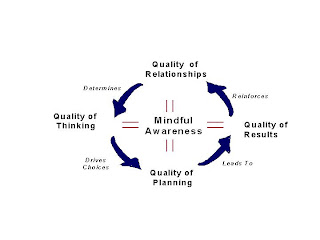 Quality. People talk about it. People want it. But no one wants to pay for it. . . . There is no time to create it. ... But there is always time to remedy the mistakes. ... What is the problem with this mindset of doing it fast and unprepared? Is it an endless loop of insanity?
Quality. People talk about it. People want it. But no one wants to pay for it. . . . There is no time to create it. ... But there is always time to remedy the mistakes. ... What is the problem with this mindset of doing it fast and unprepared? Is it an endless loop of insanity?
Most Japanese companies have always focused on quality. Quality is instilled into their culture.
Look at their culture, their architecture, their products and their mindset. They do not take much risk. They take what has been developed and re-innovate it to an article of quality. Their principal focus is on simplicity, elegance, and quality. Quality is Job 1.
My viewpoint is the same with classic German and Swiss products. They succeed because of their emphasis on quality.
Quality is simple. Quality is complete. Quality is easy to adjust. Quality creates long-term stability.
Does your plan and action include quality?
# # #
March 30, 2007
Honda Wants to Be Known for SafetyBy MICHELINE MAYNARD
MARYSVILLE, Ohio From the time it started selling cars in the United States 35 years ago, Honda has fostered a reputation for building fuel-efficient vehicles.
Now it is taking a new tack: it wants to join Volvo as an automaker best known for safety.
To get there, Honda is promoting safety as an essential part of its public image. It is offering front and side-curtain air bags and antilock brakes on most of its offerings, from the smallest cars to trucks, emphasizing that buyers need not pay top dollar for such protection.
It has also redesigned the frames of its vehicles to better spread out the impact of a crash. That redesign process, begun this decade in Japan, will be mostly complete this fall across its lineup, when the newest version of its flagship Accord sedan reaches showrooms.
Honda’s campaign, known internally as Safety for Everyone, is showing results, with some of the auto industry’s best scores on government and insurance industry crash tests.
Eight of its vehicles, from the small CR-V sport utility to the Odyssey minivan, can claim to be among the safest cars on the road, with five-star ratings from the National Highway Traffic Safety Administration in front and side crash tests, as well as the top rankings from the Insurance Institute for Highway Safety on a variety of crash tests.
Those results exceed the ratings for General Motors, Chrysler, Toyota and even Volvo, the company whose image Honda is striving to emulate. The Ford Motor Company and the Korean automaker Hyundai have a similar number of vehicles that receive those best-in-class scores, though they are not emphasizing safety as much as Honda does in its marketing, including its Web site.
We want to get the confidence of consumers, said Tomiji Sugimoto, vice president of Honda Research and Development.
And the company is winning over some buyers. Before he bought his Honda Fit in 2006, Steve Armistead, a database administrator from Vancouver, Wash., said he checked out the company’s results from the traffic safety administration and looked at crash test photos on other Web sites.
He was particularly concerned since his two teenage sons would be driving the Fit, the smallest vehicle Honda sells in the United States.
Because of the boys, safety is a top consideration for me, Mr. Armistead, 52, said. All the crash test ratings I read indicated that this was a very stable, solid car, and considering its size, a relatively safe car.
Volvo, which has been stressing safety since it began building cars in 1927, is not overly concerned about competition from Honda.
We have no plans to give up safety to Honda or anyone we have an 80-year jump on them, said Dan Johnston, a spokesman for Volvo Cars, who said Volvo was flattered by Honda’s efforts.
He and industry analysts note that crash test results are constantly evolving. The Insurance Institute for Highway Safety publishes new ratings every few weeks, as it tests more cars. And regulators are looking for ways to make safety tests more challenging, given that dozens of vehicles have scored the highest marks.
As the manufacturers have improved their vehicles, the ratings are less relevant, because they all crunch up there in the four and five stars, said Joan Claybrook, president of Public Citizen, a consumer advocacy group, and a former administrator at the traffic safety agency.
She wants additional testing to focus on pedestrian safety, rear-end crashes and roof sturdiness in case of a rollover all things that Honda, Volvo and other companies are addressing.
Philip Reed, consumer advice editor at Edmunds.com, which offers car-buying information, said Honda’s focus on becoming known as a maker of safe as well as fuel-sipping cars was a canny way to set itself apart.
If they can become Volvo, look what it did for Volvo, he said. There’s something similar between a focus on the environment and a focus on safety.
None of Honda’s cars, minivans, sport utilities or pickups are offered with anything bigger than a V-6. It beat Toyota to the hybrid-electric market in the United States, where its Insight, recently retired, went on sale a year before the Prius. (The Prius predates the Insight in Japan, however.)
There are two important issues in the automobile business: one is the environment; the other is safety, said Koichi Kondo, a senior managing director at Honda and chief operating officer for North America.
When gas prices jumped over the last few years, many buyers turned to Honda, and its American sales climbed 3.5 percent in 2006, to 1.5 million vehicles. That growth, however, was overshadowed by the 12.5 percent increase at Toyota, which passed Chrysler in 2006 to rank as the country’s third-biggest automaker.
Like Toyota, Honda is poised to grow more. On March 19, it broke ground in Greensburg, Ind., for its fourth American assembly plant, which will build 200,000 compact Civics a year beginning in 2008.
The new factory is about a three-hour drive from Honda’s research and development center in central Ohio, near its manufacturing plants in Marysville and East Liberty.
Honda’s crash test lab here opened in 2003, coinciding with its Safety for Everyone approach. It is the company’s second indoor crash test lab and acts as a backup to its primary test center in Tochigi, Japan, the world’s first company-owned indoor crash test site when it opened in 2000. (Volvo has since opened its own indoor lab.)
Measuring a million square feet, the Marysville lab is downstairs from its vast research center.
When tests occur, which is about once a week, these guys get treated to a little mini-earthquake, said Frank Paluch, the vice president for engineering.
Honda generally uses this center to test cars primarily sold in the United States, like the white Acura TL sedan it crashed recently. That analysis was meant to measure a crucial feature of the TL called the ACE body structure, which is appearing on all of Honda’s vehicles except the S2000 sports car.
ACE, which stands for advanced compatibility engineering, is meant to spread the force of a head-on crash as widely as possible to give passengers more protection, even when a smaller car hits a bigger car or an S.U.V.
The design distributes the energy from a crash throughout the entire frame of the front end, not just across the bumpers and side panels. In a collision, the ACE body crumples upward, stopping a larger vehicle from crushing it.
Inherently, when a small car and a large car collide, they’re mismatched, said Chuck Thomas, manager of Honda’s automotive safety department. We want the small car and the large car to both deform, not have the large car drive over the small car.
A crash test shows the theory in practice. An Acura, with two dummies belted into the driver and front passenger seats, was towed by an underground cable along a track, accelerating to 35 miles per hour before it crashed with a loud bang into a specially designed barrier.
The crash was photographed by high-speed cameras and charted by electronic measuring devices that fed pictures and data to engineers sitting in a control room above.
As Mr. Thomas expected, the front end of the Acura was folded upward like a tilted accordion, its headlights broken, its tires badly scuffed.
But the rest of the car was basically intact. The doors remained shut, and the dummies stayed in place, a sign that humans would fare just as well. It would be very expected that the occupants would open the doors and get out of the car, Mr. Thomas said.
Mr. Thomas admits there is only so much Honda or any manufacturer can do, short of building tanks, to keep drivers and passengers safe. It’s hard to design something that will protect you if you hit a tractor-trailer, he said.
But in the most common crashes, like those that take place on city streets, There’s no reason you can’t design a car to survive it, he said.
Mr. Reed at Edmunds said Honda’s safety-focused approach could help dispel Americans’ long-held belief that only big vehicles were safe in crashes.
Philosophically, Honda’s timing could not be better, he said, given that consumers like Mr. Armistead, who could easily justify owning something roomier, are turning to fuel-efficient vehicles as much to save money as to make statements about their personal beliefs.
I can’t get all those big vehicles off the road, Mr. Armistead said, but I cannot join the crowd. Nick Bunkley contributed reporting from Detroit.
Copyright 2007 The New York Times Company
http://www.nytimes.com/2007/03/30/business/30honda.html?





